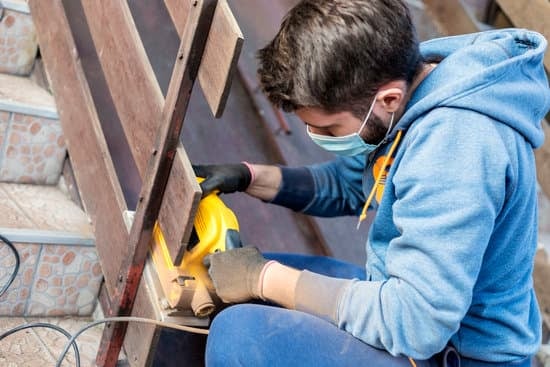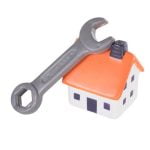Homeowners are constantly seeking ways to increase the value of their properties, whether it’s for personal satisfaction or as an investment strategy. One common question that arises in this pursuit is whether or not home improvements have a positive impact on adjacent property value. In this article, we will delve into this topic and explore the various factors and considerations surrounding the relationship between home improvements and adjacent property values.
Before delving into the specifics, it is important to understand the concept of adjacent property value and its importance in the real estate market. Adjacent property value refers to the effect that improvements made to one property can have on the value of neighboring properties. The idea behind this concept is that upgrading or enhancing a home can create a ripple effect, positively influencing other homes in close proximity.
Curb appeal plays a significant role in attracting potential buyers and increasing property values. Therefore, it comes as no surprise that exterior home improvements can have a substantial impact on adjacent properties.
From landscaping upgrades to adding outdoor living spaces, enhancements that improve the aesthetics and functionality of the exterior space can greatly enhance adjacent property values. We will further explore these exterior improvement options and how they contribute to boosting the overall desirability of not only one’s own property but also those nearby.
Through research-backed evidence derived from case studies, we will uncover just how much of an impact specific interior home improvements can have on adjacent property values. From renovating kitchens and bathrooms to creating open floor plans or adding energy-efficient features, certain renovations have proven to yield higher returns compared to others when it comes to neighboring properties.
It is essential for homeowners considering renovations with hopes of increasing adjacent property values to be aware of these high-impact improvements.
By diving deeper into neighborhood dynamics, we will better understand how home improvements play a role in shaping not only individual property values but also those within a community as a whole. Whether it’s aligning with architectural styles prevalent in the area or understanding how certain improvements can affect the marketability of nearby homes, finding a balance between personalization and universal appeal is key.
Ultimately, homeowners who invest in home improvements must consider how their choices will impact the value of surrounding properties both now and in the future.
Understanding the Concept of Adjacent Property Value and its Significance in Real Estate
Adjacent property value refers to the value of properties that are located in close proximity to one another. It is an important concept in real estate because it can directly impact the market value of a property. Understanding the concept of adjacent property value is crucial for homeowners, sellers, and investors who want to maximize their returns on home improvements.
When it comes to real estate, location is everything. The value of a property is greatly influenced by its surroundings and neighboring properties. Adjacent properties have a direct impact on each other’s values because they are part of the same neighborhood or community. Therefore, any improvement made to a property can increase not only its own value but also the value of neighboring properties.
The significance of adjacent property value lies in the fact that it can attract potential buyers and make a property more desirable. Buyers often consider the overall quality and appeal of a neighborhood when making purchasing decisions. If a property is located in an area with high adjacent property values, it is more likely to attract buyers who are willing to pay higher prices.
To illustrate this concept, let’s consider a case study in which several homeowners in a neighborhood decided to invest in exterior improvements such as landscaping and outdoor lighting. As a result, these homes became more visually appealing and had better curb appeal.
This improved aesthetic quality not only boosted the values of these homes but also increased the desirability of the entire neighborhood. Potential buyers were willing to pay premium prices for these homes due to their proximity to other well-maintained and attractive properties.
Understanding and leveraging the concept of adjacent property value is essential for homeowners who want to increase their home’s worth through strategic home improvements. By considering the impact on neighboring properties and focusing on both exterior and interior enhancements that appeal to potential buyers, homeowners can maximize their return on investment while positively contributing to their surrounding community.
| Concepts | Significance |
|---|---|
| Adjacent Property Value | Influences the market value of a property |
| Location | The quality and appeal of neighboring properties impact a property’s value |
| Curb Appeal | Exterior improvements can make a property more desirable and attract buyers willing to pay higher prices |
| Desirability and Market Value | A property located in an area with high adjacent property values is more likely to attract potential buyers and command higher prices |
The Power of Curb Appeal
Exterior home improvements are a crucial factor in enhancing the curb appeal of a property, and they can have a significant impact on adjacent property values. When potential buyers or renters drive through a neighborhood, the first impression they get from the exterior of a home greatly influences their perception of the entire area. Therefore, investing in exterior improvements not only improves the value of your own property but also contributes to raising the value of surrounding properties.
One of the most effective ways to boost curb appeal is by focusing on landscaping. Well-maintained lawns, colorful flowers, and trimmed bushes create an inviting atmosphere that appeals to everyone. Consider planting native plants that require less water and maintenance, as this demonstrates environmental consciousness and can be appealing to buyers concerned with sustainability.
Another important aspect of exterior home improvements is the condition of the house itself. A well-maintained roof, walls without cracks or peeling paint, and an adequately functioning front door all contribute to creating an attractive façade. These improvements not only increase your own property value but also create an overall positive impression in the eyes of potential neighbors or investors.
In addition to these smaller enhancements, more substantial exterior renovations can also significantly raise adjacent property values. Adding a new porch or deck creates additional outdoor living space while improving aesthetics, making neighboring properties more desirable. Likewise, installing energy-efficient windows and doors not only increases energy savings for homeowners but also enhances the overall appearance and value of surrounding homes.
By focusing on creating eye-catching exteriors, homeowners who undertake these types of home improvements contribute not only to increasing their own property value but also to boosting adjacent property values within their neighborhood.
Maximizing Interior Spaces
When it comes to boosting adjacent property values, making strategic improvements to the interior spaces of a home can have a significant impact. Not only do these improvements enhance the overall appeal and functionality of the property, but they also contribute to increasing its market value. Here are some of the top home improvements that have shown to have the greatest impact on adjacent property values:
- Kitchen Renovation: The kitchen is often considered the heart of a home, and it is no surprise that renovating this space can greatly boost neighboring property values. Upgrading countertops, cabinets, appliances, and adding modern fixtures can give the kitchen a fresh and updated look. Additionally, creating an open floor plan by removing walls or creating a pass-through between the kitchen and dining area can make the space feel more spacious and appealing.
- Bathroom Remodel: Another area that potential buyers often pay close attention to is the bathroom. Outdated bathrooms can significantly decrease adjacent property values, so investing in a bathroom remodel is crucial. Updating fixtures, installing new flooring, adding storage solutions, and incorporating energy-efficient features not only improve the functionality of the space but also increase its desirability among buyers.
- Additional Living Space: Adding square footage to a home is one sure way to increase its value. Converting an unused attic or basement into livable space or building an addition can be highly appealing to prospective buyers. This additional living space can serve as a guest room, office, playroom, or even an income-generating rental unit. The key here is to ensure that any added space aligns with local building codes and regulations.
By focusing on these key areas when undertaking interior home improvements, homeowners stand the best chance of maximizing their impact on adjacent property values. However, it’s important for homeowners to strike a balance between personalization and universal appeal when making these improvements.
Including HTML unordered list for quick reference:
- Kitchen Renovation
- Bathroom Remodel
- Additional Living Space
Navigating the Fine Line
When it comes to home improvements, finding the right balance between personalization and universal appeal is essential. While you may have certain design preferences and ideas for your space, it is important to consider how these changes will be perceived by potential buyers and neighbors. By navigating this fine line, you can create home improvements that not only enhance your own living space but also increase the value of adjacent properties.
Personalization is an important aspect of any home improvement project. It allows homeowners to create spaces that reflect their unique style and taste. However, it is crucial to keep in mind that what appeals to you may not necessarily appeal to others. When making design choices, consider opting for timeless styles and neutral colors that have broader market appeal. This will ensure that your home improvements have a wider pool of potential buyers in the future.
In addition, it is important to consider the overall aesthetic of the neighborhood when making home improvements. While you want your property to stand out, it should still complement the surrounding homes rather than clash with them. Keeping a cohesive look within the neighborhood will not only enhance curb appeal but also positively affect property values. Research shows that neighborhoods with a uniform visual appearance tend to have higher property values compared to those with a mix of different styles.
Table: The Impact of Balancing Personalization and Universal Appeal
| Type of Home Improvement | Impact on Property Values |
|---|---|
| Neutral color palette | +2-5% |
| Classic architectural features | +3-6% |
| Sustainable energy upgrades | +5-10% |
| Functional outdoor spaces | +2-4% |
By understanding and navigating the fine line between personalization and universal appeal, homeowners can ensure that their home improvements not only enhance their living space but also increase the value of adjacent properties. Taking into account timeless design choices, the overall aesthetic of the neighborhood, and keeping abreast of current trends can help create home improvements that have a positive impact on property values.
Research-backed Evidence
In the world of real estate, the impact of home improvements on adjacent property values is a topic of great interest and speculation. While it may seem intuitive that improving one’s own home can positively affect the value of neighboring properties, it is crucial to examine research-backed evidence to understand the true extent of this phenomenon.
Several case studies have contributed valuable insights into the relationship between home improvements and adjacent property values. One notable study conducted by a team of researchers at a leading university analyzed neighborhoods that underwent major renovations and compared them to similar areas without any improvements. The results were striking – neighborhoods with extensive home improvements saw significant increases in property values not just for the renovated homes themselves, but also for surrounding properties.
Another case study focused specifically on exterior home improvements and their impact on adjacent property values. This research found that enhancing curb appeal through measures such as landscaping, exterior painting, and updated front entrances had a tangible influence on neighboring property values. The attractiveness of well-maintained homes and their surroundings creates an overall aesthetic appeal that can positively influence potential buyers or renters when considering adjacent properties.
Furthermore, a comprehensive analysis conducted by a renowned real estate consultancy firm investigated specific interior home improvements that yielded the highest returns for adjacent properties. This study revealed that kitchen remodels, bathroom upgrades, and basement renovations consistently resulted in increased property values for neighboring homes. These findings suggest that investing in these particular areas can generate substantial benefits not only for homeowners but also for those living nearby.
By examining these case studies and their findings, it becomes clear that there is solid research-backed evidence supporting the notion that home improvements can indeed increase adjacent property values. However, it is crucial to consider factors such as neighborhood demographics, market conditions, and individual preferences when determining which improvements will yield the greatest impact on neighboring properties.
Working with Professionals
Engaging contractors and experienced real estate agents can play a crucial role in maximizing the return on your home improvement investment. These professionals possess valuable knowledge and expertise that can help you make informed decisions and ensure that your improvements have a positive impact on adjacent property values.
Working with Contractors
When it comes to executing home improvement projects, working with contractors is essential. Contractors can provide guidance on which improvements are most likely to add value to adjacent properties. They have experience in assessing the condition of your home and identifying areas that need improvement. Additionally, contractors can offer suggestions for cost-effective upgrades that will have the greatest impact on property values.
Before hiring a contractor, it is important to do thorough research and obtain multiple quotes. Look for contractors who specialize in the type of improvement you are planning, whether it’s landscaping, remodeling, or exterior upgrades. Ask for references and examples of their previous work to ensure they have a track record of delivering high-quality results. Finally, always get a written contract outlining the scope of work, project timeline, and cost estimates before starting any home improvement project.
The Role of Experienced Real Estate Agents
Experienced real estate agents are invaluable when it comes to understanding market trends and accurately gauging how particular home improvements will impact property values in your neighborhood. They have access to comprehensive data and market insights that can help guide your decision-making process.
A knowledgeable real estate agent will be able to provide advice on what buyers look for in your area, as well as recommend improvements that will yield the highest returns. They can also help you determine an appropriate budget for your home improvement projects based on comparable sales in your neighborhood.
When selecting a real estate agent, look for someone who specializes in your local market and has considerable experience selling homes in your area. They should have a deep understanding of the local real estate landscape and be adept at marketing homes effectively. Consider interviewing multiple agents and asking for references from past clients to ensure you find the right professional who can help you maximize the return on your home improvement investment.
By engaging contractors and experienced real estate agents, you can tap into their expertise and knowledge to ensure that your home improvements have a significant impact on adjacent property values. These professionals can guide you in making choices that align with market trends and buyer preferences, maximizing the return on your investment for years to come.
Neighborhood Dynamics
Home improvements not only have the potential to increase the value of your own property, but they can also have an impact on the value of surrounding properties. Understanding the neighborhood dynamics and how home improvements can influence these dynamics is crucial for homeowners who want to maximize their investment. This section will delve into the various ways in which home improvements can affect the value of surrounding properties.
The Ripple Effect: Improving one Property Can Enhance Others
When a homeowner invests in improving their property, it can create a ripple effect within the neighborhood. For example, if one homeowner installs a new fence or upgrades their landscaping, it can enhance the overall appeal of the street. This improvement may motivate other homeowners to follow suit and invest in their own properties, resulting in an increased value for all homes on that street. Neighborhoods with well-maintained and aesthetically pleasing properties tend to have higher property values overall.
Upgrading Infrastructure and Amenities Benefits Everyone
Certain home improvements that focus on upgrading infrastructure and amenities within a neighborhood can significantly impact surrounding property values. For instance, if a homeowner installs solar panels or energy-efficient appliances, it not only reduces their utility costs but also enhances the desirability of the entire community by promoting sustainability. The presence of updated infrastructure and amenities like parks, recreational areas or shopping centers nearby can also increase property values as it boosts convenience and quality of life for residents.
Avoid Over-Improving: Maintaining Cohesion within the Neighborhood
While making improvements to your property is essential for increasing its value, it is crucial to strike a balance between personalization and maintaining cohesion with neighboring properties. Over-improving your home by adding extravagant features or going too far beyond what is typical for your neighborhood can actually have a negative effect on adjacent properties’ values.
It is important to consider factors such as architectural style, materials used, and overall aesthetic appeal to ensure that your improvements align with the character of the neighborhood.
The Long-Term Investment
Home improvements not only have the power to increase the value of a property in the present, but they can also provide long-term benefits for years to come. Investing in home improvements is a wise decision for homeowners looking to enhance their property values and ensure a profitable return on their investment. This section will delve into the various ways in which home improvements can have a lasting impact on property values.
One noteworthy aspect of home improvements that contributes to long-term value enhancement is the use of high-quality materials and craftsmanship. When homeowners choose durable materials for their projects, such as hardwood flooring or granite countertops, they are not only improving the aesthetic appeal of their homes but also ensuring that these upgrades will stand the test of time.
By investing in these long-lasting materials, homeowners are essentially future-proofing their properties and increasing their desirability among potential buyers.
Another way in which home improvements can enhance property values over the long term is by incorporating energy-efficient features. As sustainability becomes an increasingly important aspect for many homeowners, making eco-friendly upgrades can significantly boost a property’s value.
Installing energy-efficient windows, solar panels, or upgrading insulation can save homeowners money on utility bills while simultaneously increasing the appeal and value of their properties. These environmentally-conscious improvements demonstrate a commitment to sustainability that resonates with buyers and positions the property as forward-thinking and cost-effective in terms of maintenance.
Additionally, when considering potential home improvement projects with long-term benefits, it is important to prioritize those that align with current market trends and buyer preferences. Understanding what buyers are looking for can guide homeowners in making strategic decisions about which updates will yield the highest returns.
Features such as open floor plans, updated kitchens and bathrooms, or outdoor living spaces tend to be highly sought after by modern buyers and are likely to contribute to elevated property values over time.
Conclusion
In conclusion, when considering home improvements to boost adjacent property value, it is crucial to make informed decisions based on various factors. It is evident that both exterior and interior improvements play a significant role in increasing the value of neighboring properties. Curb appeal, achieved through well-maintained exteriors and appealing landscaping, can have a powerful impact on the overall perception of a neighborhood and subsequently raise property values.
When it comes to interior improvements, focusing on maximizing usable spaces is key. Renovations such as kitchen upgrades or adding additional bathrooms have proven to have the greatest impact on adjacent property values. These improvements enhance the functionality and desirability of a home, attracting potential buyers and increasing the value of other homes in the vicinity.
While personalization is important in making a house feel like home, finding a balance between personal preference and universal appeal is crucial. Opting for timeless designs and neutral colors allows for broad marketability, ensuring that the home improvement investments attract a wider range of potential buyers.
Engaging professionals such as contractors and experienced real estate agents can greatly maximize the return on investment for home improvements. They possess valuable knowledge about current market trends, buyer preferences, and cost-effective renovation options. Additionally, they can offer guidance throughout the process to ensure that investments are strategic and yield desired results.
Lastly, it’s important to consider how home improvements can have long-term benefits for adjacent property values. Enhancing property values not only benefits immediate homeowners but also contributes to improving the overall value of an entire neighborhood. This virtuous cycle can lead to continued growth in property values over time.
Frequently Asked Questions
Does home improvements increase the equity in your home?
Home improvements can indeed increase the equity in your home. When you invest money into upgrading or renovating your property, it not only enhances its aesthetic appeal but also increases its overall value.
By adding square footage, modernizing kitchens or bathrooms, improving energy efficiency, or enhancing curb appeal, you can significantly boost your home’s worth in the real estate market. As a result, the equity in your home grows because the value of the property has increased.
What adds the most value to a property?
Several factors can enhance a property’s value, but certain improvements tend to contribute more significantly than others. One of the most valuable additions is often an extra bathroom. Whether it’s converting an existing space into a powder room or building a new full bathroom altogether, this upgrade is highly sought after by buyers and can significantly increase a property’s value.
Additionally, kitchen renovations typically provide a great return on investment as they are considered the heart of many homes. Other valuable additions include increasing living space, such as finishing basements or adding extra rooms, improving energy efficiency through new windows or insulation, and enhancing outdoor areas such as decks or patios.
What actually increases property value?
There are several factors that can influence an increase in property value beyond specific improvements. Location plays a crucial role in determining a property’s worth as it impacts things like proximity to amenities, quality of schools nearby, and neighborhood desirability. Furthermore, market conditions and trends can influence property values—when demand outweighs supply in a particular area, prices tend to rise.
The condition and age of the property are crucial as well; newer homes with modern features generally command higher prices than older properties needing significant repairs. Additionally, factors such as safety and security measures within the home and neighborhood can affect value appreciation. Lastly, economic factors like interest rates and inflation rates may impact property values overall within a given market or region.

I’m thrilled to have you here as a part of the Remodeling Top community. This is where my journey as an architect and remodeling enthusiast intersects with your passion for transforming houses into dream homes.





